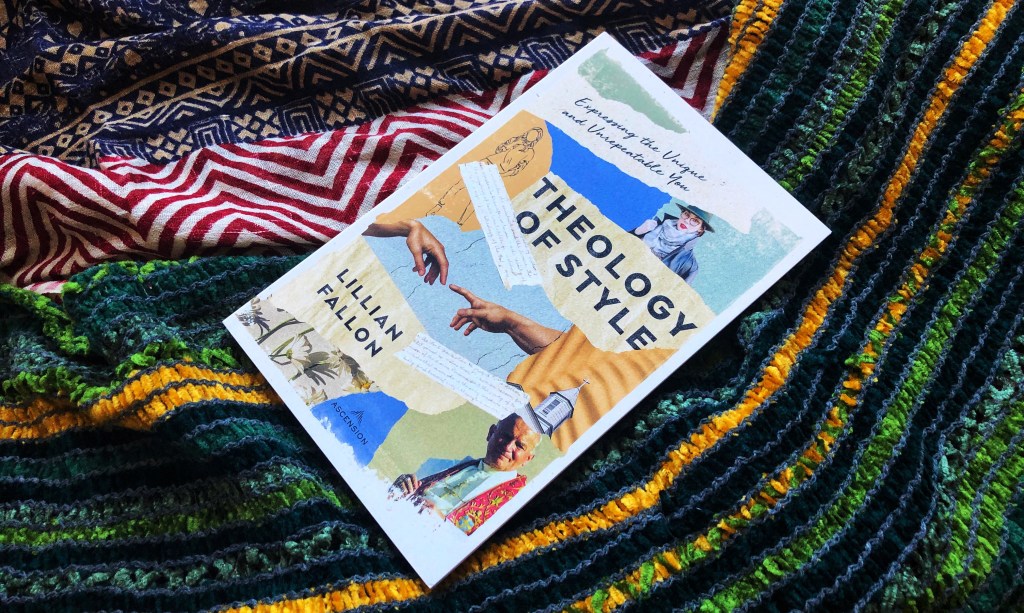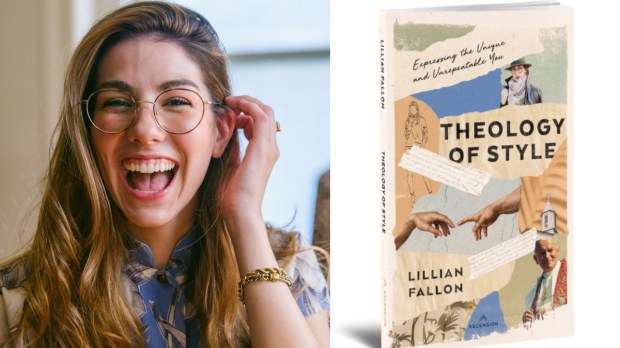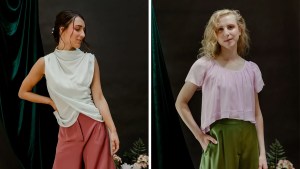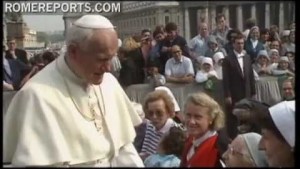“Clothes and fashion are materialistic,” I said sternly to myself as I switched between website tabs for the Fashion Institute of Technology and Ave Maria University. I was 17 years old, sitting in my bedroom surrounded by fashion magazines. “A good Catholic girl should go to a good Catholic school, right?”
Faith and style had always coexisted in my life, but it wasn’t until I had to consider my future that I felt like they might be opposed to each other. Did my passion for self-expression through material things make me materialistic? I felt a pull to deepen my understanding of the Catholic faith, so I attended Ave Maria University in Florida.
This decision ended up being providential, because during my junior year, I signed up for a class that changed my life. It ultimately propelled me to write a book on the intersection of Catholic theology and personal style.
The class was called Theology of The Body, based on the teachings of St. John Paul II. Dr. Michael Waldstein, who taught the class, was an expert on the subject who translated the pope’s Wednesday audiences into English. He described the human person in a way I had never heard before. Theology of the Body wasn’t just the Catholic’s guide to chastity, sex, and marriage, it was the ultimate anthropology of the human person.
In his class, Dr. Waldstein quoted St. John Paul II: “The structure of [man’s] body is such that it permits him to be the author of genuinely human activity. In this activity, the body expresses the person.”

The body expresses the person
Dr. Waldstein further explained St. John Paul II’s words, “The body manifests the soul.” He explained that the body and soul were inseparable: “This ‘body’ reveals the ‘living Soul’ which Man became when God-Yahweh breathed life into him.” Our bodies are not merely fleshy vessels or distractions from getting to heaven. Our bodies manifest our souls.
The more I thought about it, the more it made sense. Consider a smile, tears, laughter. These expressions are materialized in the body, communicating our humanity. A simple expression can reveal our deepest emotion. The materiality of the body nonverbally communicates who we are on a micro-level as individuals but also on a macro-level as beings created in the Image of God. St. John Paul II revealed that the materiality of the body is necessary for the expression of the soul.
A thought surfaced in my mind: “If the body manifests the soul, then the things we wear can aid this manifestation.” I realized that if the physical nature of the body is so significant in the expression of the human person, the way we dress our bodies must be important, too.
Making visible the invisible
One line in Theology of The Body stood out to me in particular. St. John Paul II said, “The body, in fact, and only the body, is capable of making visible what is invisible: the spiritual and the divine” (TOB 19:4). I couldn’t help but see the correlation to personal style. Because the body manifests the soul and the soul is expressed through our bodies, the things we choose to wear can communicate the invisible beauty of the soul while dignifying the visible beauty of the body.
Images exploded in my mind: outfits of vibrant colors, sumptuous fabrics, and striking silhouettes. All adorning the body, aiding in the expression of the soul. I was filled with a desire to pay reverence to my body — to dignify it with the clothes I wore and to choose items that emphasized the beauty of my soul. We can tangibly see the beauty of shapes, fabric, colors, textures, and more, but more importantly, the intangible beauty of the human person shines through it all.
On a theological level, I realized that the things we wear are a visible sign of the relationship between the internal and external, the inseparable relationship between body and soul. When we dress to celebrate our body-soul unity, we are celebrating being made in the Image of God Himself which is an incredible tool for evangelization and personal, spiritual growth. Not only do we grow in understanding our identity as children of God, but we invite those around us to recognize the same thing in themselves.

A return to the fashion world
Determined to further explore the significance of personal style and the expression of the human person, I began pursuing a career in fashion again. I ultimately became the Style Editor at Verily Magazine in New York City, and the truths I had discovered in the pages of Theology of the Body found their way into my work.
As my personal style developed, the more I grew in the knowledge of my self-worth. The more I dressed to express the unity of my body and soul through dignifying my body and choosing beautiful items that reflected the beauty of my soul, the more I understood who I was in the eyes of God. Ultimately, it didn’t matter what I wore — I knew I was unconditionally loved by the Creator simply because He made me.
Our identity isn’t found in how we look, it’s found in how we were made. But I believe we are called to dress in a way that reflects how He made us. Style isn’t about the clothes themselves, but celebrating God’s creation through using sartorial self-expression as a tool to understand the depths of our personhood and the love of the Father who brought us into existence in His image.
Theology of Style
Ever since that Theology of the Body class in college, a voice kept prodding me to write a book on Theology of the Body and personal style. I started writing. In the pages of Theology of Style: Expressing the Unique and Unrepeatable You, I dive into how style relates to St. John Paul II’s Theology of the Body and his Letter to Artists, the anthropology of the human person, the psychology of style, the expression of femininity and masculinity in our clothing, and of course, modesty.
Theology of Style is all about growing in the understanding of our identity as beings made by the Creator, completely one-of-a-kind and desired for eternity. Personal style is merely a tool, meant to aid in the discovery of how deeply we are wanted and loved by God.
Lillian Fallon is a Catholic writer with a passion for helping women express their unrepeatability through personal style. She recently released Theology of Style: Expressing The Unique and Unrepeatable You through Ascension Press. Lillian worked as a style editor in New York City before ultimately landing at the Catholic fashion label Litany NYC. She currently resides in Pennsylvania with her orange tabby cat, Tito. You can follow her on Instagram @lillian_fallon.



